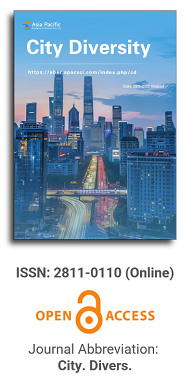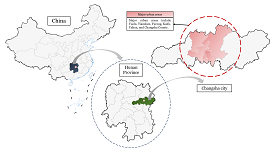
Asia Pacific Academy of Science Pte. Ltd. (APACSCI) specializes in international journal publishing. APACSCI adopts the open access publishing model and provides an important communication bridge for academic groups whose interest fields include engineering, technology, medicine, computer, mathematics, agriculture and forestry, and environment.

As China's pillar industry, the property market has suffered a considerable impact in recent years, with a decline in turnover and many developers at risk of bankruptcy. As one of the most concerned factors for stakeholders, housing prices need to be predicted more objectively and accurately to minimize decision-making errors by developers and consumers. Many prediction models in recent years have been unfriendly to consumers due to technical difficulties, high data demand, and varying factors affecting house prices in different regions. A uniform model across the country cannot capture local differences accurately, so this study compares and analyses the fitting effects of multiple machine learning models using February 2024 new building data in Changsha as an example, aiming to provide consumers with a simple and practical reference for prediction methods. The modeling exploration applies several regression techniques based on machine learning algorithms, such as Stepwise regression, Robust regression, Lasso regression, Ridge regression, Ordinary Least Squares (OLS) regression, Extreme Gradient Boosted regression (XGBoost), and Random Forest (RF) regression. These algorithms are used to construct forecasting models, and the best-performing model is selected by conducting a comparative analysis of the forecasting errors obtained between these models. The research found that machine learning is a practical approach to property price prediction, with least squares regression and Lasso regression providing relatively more convincing results.
Industry-related diversity, unrelated diversity and urban aggregate employment creation—Adjustment based on urban absorptive capacity and entrepreneurship level
Vol 5, Issue 1, 2024
Download PDF
Abstract
Employment is the biggest livelihood of the people. What kind of industrial structure is more conducive to employment creation is an important issue for the government to consider when adjusting the industrial structure. Using enterprise and city data, using a spatial dynamic panel model that takes into account both the dynamic change of dependent variables and the spatial spillover effect, and can overcome the endogenous problem between variables, this paper examines the impact of industry-related diversity and unrelated diversity on urban aggregate employment creation. The study finds that both types of diversity are conducive to urban aggregate employment creation, but the role of related diversity is more prominent in comparison. Urban heterogeneity plays an important role in regulating the employment creation effect of industrial diversity. Among them, urban absorptive capacity strengthens the employment creation effect of the two types of industrial diversity, and is more conducive to promoting the employment creation effect of related diversity. However, the level of Urban Entrepreneurship is only positive for the employment creation effect of unrelated diversity.
Keywords
References
- Henderson V, Kuncoro A, Turner M. Industrial Development in Cities. Journal of Political Economy. 1995; 103(5): 1067-1090. doi: 10.1086/262013
- Combes PP. Economic Structure and Local Growth: France, 1984–1993. Journal of Urban Economics. 2000; 47(3): 329-355. doi: 10.1006/juec.1999.2143
- Jacobs J. The Economy of Cities. New York: Random House; 1969.
- Haltiwanger J, Jarmin RS, Miranda J. Who Creates Jobs? Small vs. Large vs. Young. Review of Economics and Statistics. 2013; 95(2): 347-361. doi: 10.1162/REST_a_00288
- Glaeser EL, Kallal HD, Scheinkman JA, et al. Growth in Cities. Journal of Political Economy. 1992; 100(6): 1126-1152. doi: 10.1086/261856
- Sun X, Chai L. Related diversification, unrelated diversification and regional economic development. China industrial economy. 2012; (6): 5-17
- Frenken K, Van Oort F, Verburg T. Related Variety, Unrelated Variety and Regional Economic Growth. Regional Studies. 2007; 41(5): 685-697. doi: 10.1080/00343400601120296
- Boschma R, Iammarino S. Related Variety, Trade Linkages, and Regional Growth in Italy. Economic Geography. 2009; 85(3): 289-311. doi: 10.1111/j.1944-8287.2009.01034.x
- Boschma R, Minondo A, Navarro M. The Emergence of New Industries at the Regional Level in Spain: A Proximity Approach Based on Product Relatedness. Economic Geography. 2012; 89(1): 29-51. doi: 10.1111/j.1944-8287.2012.01170.x
- Hartog M, Boschma R, Sotarauta M. The Impact of Related Variety on Regional Employment Growth in Finland 1993–2006: High-Tech versus Medium/Low-Tech. Industry & Innovation. 2012; 19(6): 459-476. doi: 10.1080/13662716.2012.718874
- van Oort F, de Geus S, Dogaru T. Related Variety and Regional Economic Growth in a Cross-Section of European Urban Regions. European Planning Studies. 2014; 23(6): 1110-1127. doi: 10.1080/09654313.2014.905003
- Castaldi C, Frenken K, Los B. Related Variety, Unrelated Variety and Technological Breakthroughs: An analysis of US State-Level Patenting. Regional Studies. 2014; 49(5): 767-781. doi: 10.1080/00343404.2014.940305
- Cohen WM, Levinthal DA. Absorptive Capacity: A New Perspective on Learning and Innovation. Administrative Science Quarterly. 1990; 35(1): 128. doi: 10.2307/2393553
- Fritsch M. New Business Formation and Regional Development: A Survey and Assessment of the Evidence. Foundations and Trends® in Entrepreneurship. 2013; 9(3): 249-364. doi: 10.1561/0300000043
- Baumol A, William J. Entrepreneurial Enterprises, Large Established Firms and Other Components of the Free -Market Growth-Machine. Small Business Economics. 2004; 23: 9-21. doi: 10.1023/B:SBEJ.0000026057.47641.a6
- Jacobs JPAM, Ligthart JE, Vrijburg H. Dynamic Panel Data Models Featuring Endogenous Interaction and Spatially Correlated Errors. SSRN Electronic Journal. 2009. doi: 10.2139/ssrn.1517257
- Blundell R, Bond S. Initial Conditions and Moment Restrictions in Dynamic Panel Data Models. Journal of Econometrics. 1998; 87(1): 115-143. doi: 10.1016/S0304-4076(98)00009-8
- Anselin L, Florax RJGM. New Directions in Spatial Econometrics. Springer Berlin Heidelberg; 1995.
- Wei H, Li X. Imported inputs and employment changes of Chinese enterprises. Statistical research. 2018; (1): 43-52.
Supporting Agencies
Copyright (c) 2024 xiangmin He, yongjian Lai

This work is licensed under a Creative Commons Attribution 4.0 International License.

This site is licensed under a Creative Commons Attribution 4.0 International License (CC BY 4.0).

Prof. Mehmet Cetin
Kastamonu University,
Turkey
Polish Scientific Bibliography

